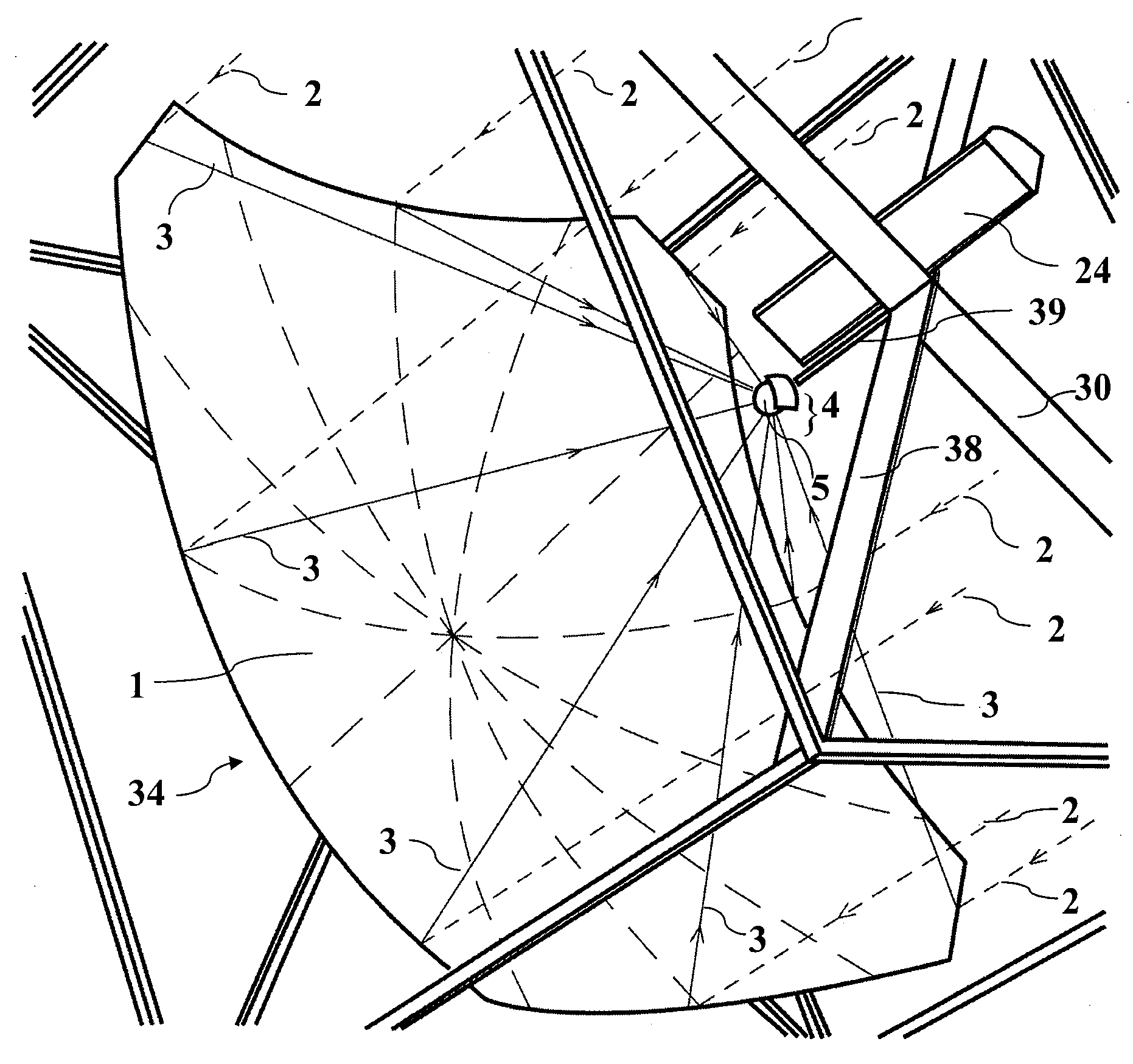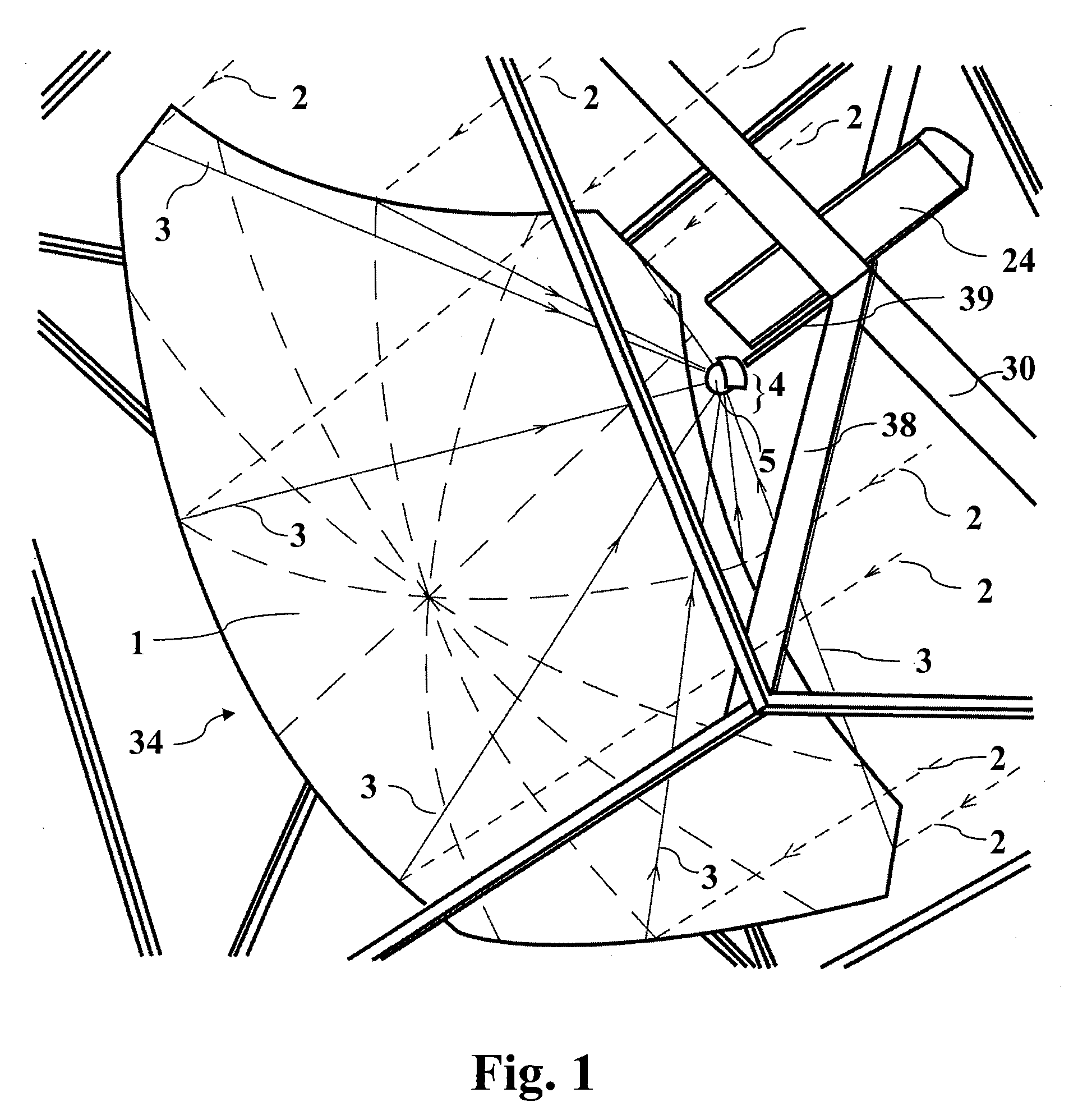Photovoltaic generator with a spherical imaging lens for use with a paraboloidal solar reflector
a photovoltaic generator and paraboloidal technology, applied in the direction of heat collector mounting/support, manufacturing tools, light and heating equipment, etc., can solve the problems of low efficiency, achieve low parasitic power loss for the coolant pump and fan of the active cooling system, and increase the surface area
- Summary
- Abstract
- Description
- Claims
- Application Information
AI Technical Summary
Benefits of technology
Problems solved by technology
Method used
Image
Examples
Embodiment Construction
[0115]FIG. 1 is a perspective view of a generator 4 according to the invention, in operation at the focus of a paraboloidal reflector 1. Sunlight enters the system as radiation or rays 2 which are reflected by the mirror 1. The mirror 1 is shaped so that reflected solar radiation or rays 3 are directed toward the focus 28 where a generator 4 is located. In operation, a generator 4 is designed for use at the focus 28 of a preferably paraboloidal reflector or mirror 1 whose axis is pointed at the sun by a two-axis tracker.
[0116]A mirror 1 to supply solar power to a generator according to this invention has preferably a substantially paraboloidal reflecting surface that reflects as much of the sunlight as possible and concentrates it at the location of the generator 4. A paraboloidal shaped reflector 1 is preferred, because it will reflect parallel incoming rays 2 to a focal point 28. In a preferred embodiment wherein the reflector 1 is substantially paraboloidal, deviation of the shap...
PUM
| Property | Measurement | Unit |
|---|---|---|
| Angle | aaaaa | aaaaa |
| Angle | aaaaa | aaaaa |
| Angle | aaaaa | aaaaa |
Abstract
Description
Claims
Application Information
 Login to View More
Login to View More - R&D
- Intellectual Property
- Life Sciences
- Materials
- Tech Scout
- Unparalleled Data Quality
- Higher Quality Content
- 60% Fewer Hallucinations
Browse by: Latest US Patents, China's latest patents, Technical Efficacy Thesaurus, Application Domain, Technology Topic, Popular Technical Reports.
© 2025 PatSnap. All rights reserved.Legal|Privacy policy|Modern Slavery Act Transparency Statement|Sitemap|About US| Contact US: help@patsnap.com



